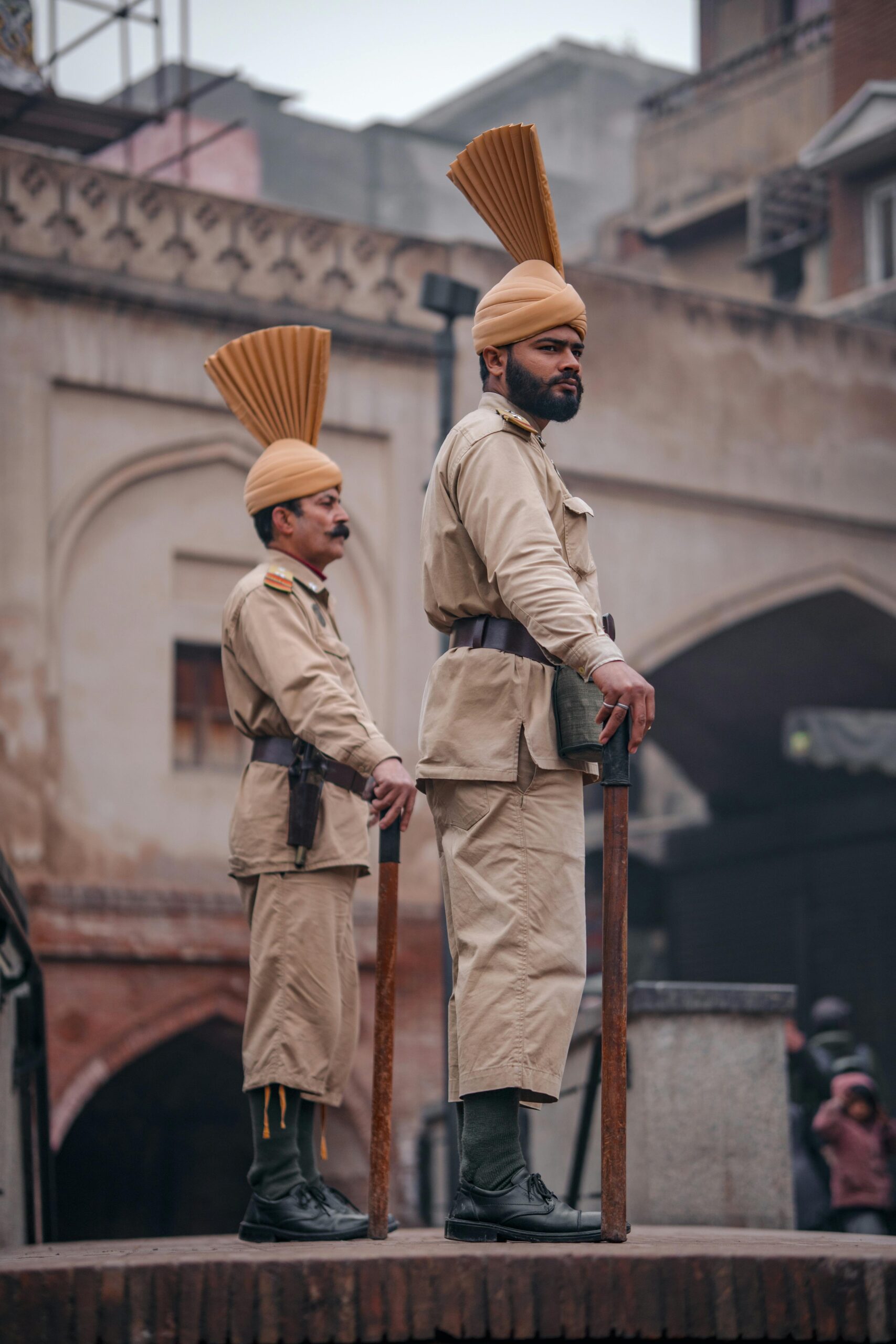Understanding the Army Ranks Pakistan can be a fascinating journey into the powerful military hierarchy that shapes one of the most disciplined forces in the world. Are you curious about how the Pakistan Army ranks are structured, and what each rank signifies? This comprehensive guide will unravel the mysteries behind the military ranking system in Pakistan, revealing the roles, responsibilities, and prestige associated with each position. Whether you are a military enthusiast, a student, or someone intrigued by defense forces, this detailed explanation of Pakistan Army ranks and insignia will keep you hooked!
The Pakistan Army hierarchy is not just a list of titles; it reflects a well-organized chain of command that ensures operational efficiency and national security. From the lowest enlisted soldiers to the highest generals, each rank carries immense significance and authority. Did you know that the Pakistan Army ranks list includes unique titles that differ from other global armies? This article will also explore the insignia and badges that represent these ranks, offering a visual understanding of the military power structure. Stay tuned to discover how the Pakistan Army rank system influences the career progression and decision-making within the army, all while maintaining the highest standards of discipline and honor.
Unlock the secrets of the military ranks in Pakistan and gain insights into one of South Asia’s most respected armed forces. This explainer not only highlights the rank names but also dives into the historical background and modern-day relevance of the Pakistan Army’s ranking system. Ready to explore the powerful hierarchy that commands respect and authority? Let’s dive deep into the world of Pakistan Army ranks explained and discover the backbone of this formidable military institution.
Understanding Pakistan Army Ranks: A Complete Guide to Military Hierarchy and Roles
Understanding Pakistan Army Ranks: A Complete Guide to Military Hierarchy and Roles
Pakistan Army is one of the most respected institutions in the country, known for its discipline, strength, and organization. Many people wonder about the structure inside the army, especially about the ranks and their importance. If you have ever asked yourself, “What is the meaning of different Pakistan Army ranks?” or “How does the military hierarchy works in Pakistan?” then this article is for you. We will explore the Pakistan Army ranks, explain their roles and responsibilities, and give you a clearer picture how the powerful military hierarchy functions.
Military Hierarchy: Why It Matters
Military ranks are not just titles; they define chain of command, responsibility, and authority. In Pakistan Army, ranks are split into different categories, mainly commissioned officers, junior commissioned officers (JCOs), and non-commissioned officers (NCOs) or soldiers. This structure helps in maintaining order and efficiency, especially during operations or training.
The hierarchy also reflects the level of experience and leadership. For example, a Lieutenant will always be junior to a Captain, and a Major will have more authority than a Captain. This clear distinction ensures that commands are followed properly without confusion.
Commissioned Officers Ranks in Pakistan Army
Commissioned officers are the leaders and decision-makers in the army. They receive their commission from the President of Pakistan and have the authority to command troops. The ranks in this category are as follows:
- Second Lieutenant: The entry-level rank for commissioned officers. They usually command platoons and are responsible for leading soldiers directly.
- Lieutenant: Slightly senior to Second Lieutenant, often in charge of larger units or specialized roles.
- Captain: Typically commands company-sized units (about 100 soldiers). Captains have significant leadership roles and often involved in tactical planning.
- Major: A field officer rank. Majors assists in battalion command or serve as staff officers.
- Lieutenant Colonel: Commands battalion or serve in senior staff positions.
- Colonel: Senior field officer usually responsible for brigade staff or significant administrative roles.
- Brigadier: A one-star general officer commanding brigade-sized units.
- Major General: Two-star general, in charge of divisions or major army formations.
- Lieutenant General: Three-star general, often holds corps command or key staff appointments.
- General: Four-star general, the highest rank in the Pakistan Army, typically the Chief of Army Staff.
- Field Marshal: This rank is mostly honorary and rarely awarded, representing the highest possible rank.
Junior Commissioned Officers (JCOs)
Junior Commissioned Officers act as a bridge between the enlisted soldiers and commissioned officers. They have more experience and often supervise soldiers on the ground. Their ranks include:
- Naib Subedar: Junior JCO rank, usually assists in platoon leadership.
- Subedar: Commands a platoon or acts as senior non-commissioned officer.
- Subedar Major: The highest JCO rank, often serves as a senior advisor to officers and soldiers alike.
Non-Commissioned Officers and Soldiers
The backbone of the army is the enlisted men and NCOs. These ranks are essential for daily operations and discipline enforcement.
- Lance Naik: Junior NCO rank, assists in small unit leadership.
- Naik: Like a corporal, commands a small group of soldiers.
- Havildar: Equivalent to a sergeant, responsible for a section or squad.
- Sepoy: The basic soldier rank, entry-level position for all new recruits.
Pakistan Army Ranks Table: Quick Overview
| Rank Type | Rank Name | Role/Responsibility |
|---|---|---|
| Commissioned Officer | Second Lieutenant | Platoon leader, entry rank |
| Commissioned Officer | Lieutenant | Junior officer, leads platoon |
| Commissioned Officer | Captain | Company commander |
| Commissioned Officer | Major | Battalion staff officer |
| Commissioned Officer | Lieutenant Colonel | Battalion commander |
| Commissioned Officer | Colonel | Brigade staff officer |
| Commissioned Officer | Brigadier | Brigade commander |
| Commissioned Officer | Major General | Division commander |
| Commissioned Officer | Lieutenant General | Corps commander |
| Commissioned Officer | General | Chief of Army Staff |
| Junior Commissioned Officer | Naib Subedar | Assistant platoon leader |
| Junior Commissioned Officer | Subedar | Platoon commander |
| Junior Commissioned Officer | Subedar Major | Senior JCO, advisor |
| Non-Commissioned Officer | Lance Naik | Junior NCO |
| Non-Commissioned Officer | Naik | Squad leader |
| Non-Commissioned Officer | Havildar | Section commander |
| Soldier |
Top 7 Pakistan Army Ranks Explained: Unlocking the Power Structure in English
The Pakistan Army is one of the most respected and powerful military forces in the region. Its structure, discipline, and hierarchy are critical for its operation and success. For many civilians and even some military enthusiasts, understanding the army ranks Pakistan uses can be a bit confusing. This article aims to explain the top 7 Pakistan Army ranks, unlocking the power structure behind the uniforms. Whether you are a student, researcher, or just curious, this guide will help you discover the powerful military hierarchy in Pakistan’s army.
Why Army Ranks Matter in Pakistan
Army ranks Pakistan explained is important because it shows how authority and responsibility are distributed within the military. Each rank represents a level of command, skill, and experience. It also helps maintain order and discipline, which is essential for any army to function properly. The structure is not just about titles but about the roles these individuals play in defense of the country.
This system of ranks in Pakistan Army is inherited from the British colonial era but has evolved to suit national needs. Knowing these ranks also helps in recognizing the chain of command during operations and official ceremonies.
Top 7 Pakistan Army Ranks Explained
Here are the top seven ranks in the Pakistan Army, starting from the highest in the hierarchy. We will look at each rank, its responsibilities, and some historical notes where applicable.
-
General (GEN)
- The highest rank in the Pakistan Army.
- Usually held by the Chief of Army Staff (COAS), the top military officer.
- Responsible for overall command and decisions of the entire army.
- Historically, only a few officers reach this rank, reflecting its exclusivity.
- Example: General Qamar Javed Bajwa served as COAS from 2016 to 2022.
-
Lieutenant General (LT GEN)
- The second highest rank, usually commanding corps or serving in top staff roles.
- In charge of large units or important departments within the army.
- Officers at this rank must have decades of experience and proven leadership.
-
Major General (MAJ GEN)
- Commands divisions or serves as deputy commanders in corps.
- Plays key roles in strategic planning and operational control.
- Often involved in training and administration at higher levels.
-
Brigadier (BRIG)
- Commands brigades, which are made up of several battalions.
- Acts as a bridge between senior generals and field officers.
- Responsible for tactical operations and logistics within their brigade.
-
Colonel (COL)
- Senior field officer rank, commanding a battalion or serving in staff roles.
- Handles day-to-day management of troops and operational planning.
- Colonels often serve as instructors in military academies or advisors.
-
Lieutenant Colonel (LT COL)
- Commands smaller units or acts as second-in-command in battalions.
- Important for tactical leadership and maintaining troop discipline.
- Often the rank where officers start gaining significant command responsibilities.
-
Major (MAJ)
- Junior field officer rank, usually commanding companies or serving as staff officers.
- Responsible for small unit tactics and training soldiers under their command.
- Majors are often promoted based on merit and performance in the field.
Comparison of Pakistan Army Ranks with Other Militaries
It is interesting to compare Pakistan’s army ranks with those of other countries, like the United States or the United Kingdom, to see similarities and differences:
- General (GEN) in Pakistan is equivalent to the four-star General in the US Army.
- Lieutenant General (LT GEN) corresponds to a three-star General in the US system.
- Major General (MAJ GEN) is a two-star rank both in Pakistan and the US.
- The lower ranks like Brigadier and Colonel also have similar roles but may vary slightly in responsibilities.
This similarity exists because Pakistan Army’s rank system is based on the British model, which influenced many Commonwealth countries.
Practical Examples of Pakistan Army Ranks in Action
To make it more clear how these ranks operate, here are some practical examples:
- During a military operation, a General will oversee the entire campaign and make strategic decisions.
- A Lieutenant General will manage specific corps in the field, ensuring objectives are met.
- A Major General might plan logistics and support for frontline units.
- A Brigadier will lead a brigade in combat, directing battalions under their command.
- A Colonel commands a battalion directly engaging with enemy forces or training troops.
- A Lieutenant Colonel might be in charge of a company or act as an executive officer in a battalion.
- A Major typically leads a company or
How Pakistan Army Ranks Define Authority: Key Insights into Military Command Levels
The Pakistan Army, being one of the most respected institutions in the country, have a rigid and well-defined structure of ranks that clearly show the chain of command. Army ranks Pakistan hold much more than just a title; they define authority, responsibilities, and the respect a soldier commands within the military hierarchy. Understanding these ranks is essential not only for those interested in military affairs but also for civilians who wants to appreciate how the armed forces operate effectively.
The Importance of Military Hierarchy in Pakistan Army
Military hierarchy exists to maintain order, discipline, and effective command throughout the armed forces. In Pakistan Army, each rank represents a specific level of authority, and commands certain duties and obligations. Without a clear ranking system, confusion would arise in operations, training, and strategic planning, which could be disastrous especially during wartime. The ranks are not just symbols but the backbone of military organization.
Overview of Pakistan Army Ranks – Categories and Levels
Pakistan Army ranks are broadly categorized into three main groups:
- Commissioned Officers
- Junior Commissioned Officers (JCOs)
- Non-Commissioned Officers (NCOs) and Soldiers
These groups differ in terms of responsibilities and command powers. Commissioned officers usually command at higher levels and plan operations, while JCOs and NCOs supervise troops and handle practical tasks on ground.
Commissioned Officers: The Top Commanders
Commissioned officers are the leaders who have received commissions from the President of Pakistan. They usually come through military academies like the Pakistan Military Academy (PMA) at Kakul. Their ranks, from the lowest to highest, include:
- Second Lieutenant
- Lieutenant
- Captain
- Major
- Lieutenant Colonel
- Colonel
- Brigadier
- Major General
- Lieutenant General
- General
For example, a Captain in Pakistan Army commands a company, which consists about 100 to 200 soldiers. Colonels might command a battalion or hold important staff appointments. The generals, particularly the Chief of Army Staff, hold the highest authority and make strategic decisions affecting the entire army.
Junior Commissioned Officers (JCOs): The Bridge Between Officers and Soldiers
JCOs have a unique position in Pakistan Army. They are senior to Non-Commissioned Officers but below commissioned officers. Their ranks include:
- Naib Subedar
- Subedar
- Subedar Major
JCOs often act as a link between the enlisted soldiers and officers. They have authority to lead troops in battle and also ensure discipline and morale among the ranks. JCOs usually have years of service experience and are respected advisors to commanding officers.
Non-Commissioned Officers and Soldiers: The Backbone of the Army
NCOs and soldiers form the bulk of the Pakistan Army. Their ranks include:
- Lance Naik
- Naik
- Corporal
- Havildar
- Sepoy (Private)
These ranks are responsible for executing orders, conducting training, and maintaining equipment. For example, a Havildar is typically a squad leader who supervises a small group of soldiers during missions. Sepoys are the entry-level soldiers who carry out the basic tasks assigned.
Visual Table of Pakistan Army Ranks and Their Equivalent Authority
| Rank Category | Rank Name | Approximate Role/Command Level |
|---|---|---|
| Commissioned Officer | Second Lieutenant | Platoon Commander |
| Commissioned Officer | Captain | Company Commander |
| Commissioned Officer | Major | Battalion Executive Officer |
| Commissioned Officer | Colonel | Battalion Commander |
| Commissioned Officer | Brigadier | Brigade Commander |
| Commissioned Officer | Major General | Division Commander |
| Commissioned Officer | Lieutenant General | Corps Commander |
| Commissioned Officer | General | Chief of Army Staff |
| Junior Commissioned Officer | Naib Subedar | Platoon Commander Assistant |
| Junior Commissioned Officer | Subedar | Platoon Commander |
| Junior Commissioned Officer | Subedar Major | Senior JCO Advisor |
| Non-Commissioned Officer | Corporal | Squad Leader |
| Non-Commissioned Officer | Havildar | Section Commander |
| Soldier | Sepoy | Basic Infantryman |
Historical Context of Pakistan Army Ranks
The Pakistan Army’s rank structure is largely inherited from the British Indian Army during colonial times. After independence in 1947, Pakistan retained the British ranking system but gradually adapted it to reflect its own military traditions and requirements. The ranks and insignia have evolved but still show strong British influence. This historical connection explains why the Pakistan Army ranks are similar to those of other Commonwealth countries.
How Ranks Define Authority and Command Levels
Ranks are not just about wearing different badges; they define who reports to whom, who makes decisions, and who leads troops in combat or peacekeeping missions. For instance:
- A Lieutenant cannot command a battalion but reports to a Major or Colonel.
- A Subedar Major holds authority over many soldiers
Step-by-Step Breakdown of Pakistan Army Ranks in English: From Soldier to General
The Pakistan Army is one of the most respected and powerful institutions in the country, playing a crucial role in national defense and security. Understanding the military hierarchy within the Pakistan Army can sometimes be confusing, especially for those unfamiliar with its structure. This article aims to provide a clear, step-by-step breakdown of Pakistan Army ranks in English, guiding you from the lowest soldier rank all the way up to the generals. You will also discover how this hierarchy functions and why it is important for maintaining order and discipline in the army.
Overview of Pakistan Army Ranks
In Pakistan Army, ranks are divided mainly into three categories: Junior Commissioned Officers (JCOs), Non-Commissioned Officers (NCOs), and Commissioned Officers. Each category has several ranks and responsibilities that contribute differently to the military operations. The hierarchy is designed to ensure smooth command and control, with each rank carrying specific duties and authority.
Starting Point: Soldier Ranks in Pakistan Army
The journey in the Pakistan Army begins at the rank of a soldier. These are the enlisted personnel who perform most of the frontline tasks.
- Sepoy: This is the base rank for any new recruit in the Pakistan Army. The Sepoy undergoes rigorous training before being deployed for various military operations.
- Lance Naik: The first promotion above Sepoy; Lance Naik acts as a junior leader in small units.
- Naik: Considered a Non-Commissioned Officer, Naiks have more responsibility, often leading small groups of soldiers.
- Havildar: Senior Non-Commissioned Officer rank responsible for larger squads and sometimes acting as the link between officers and enlisted men.
These ranks are essential in maintaining discipline among the troops and ensuring commands are carried out effectively.
Junior Commissioned Officers (JCOs)
The JCO ranks serve as a bridge between the enlisted soldiers and the commissioned officers. They are respected for their experience and leadership qualities.
- Naib Subedar: The lowest JCO rank, Naib Subedars are often in charge of platoons and assist commissioned officers.
- Subedar: This rank holds more authority and is responsible for larger units.
- Subedar Major: The highest JCO rank, they serve as senior advisors to officers and play a key role in administration.
JCOs are often veterans with many years of service, making them invaluable to the Pakistan Army structure.
Commissioned Officers: The Leadership of Pakistan Army
Commissioned Officers hold the highest authority in the Pakistan Army. Their ranks symbolize not just power but also the trust placed in them by the nation.
- Second Lieutenant: The entry-level rank for commissioned officers, usually gained after graduating from the Pakistan Military Academy.
- Lieutenant: After some years of service, Second Lieutenants get promoted to Lieutenants.
- Captain: Captains command companies and are responsible for tactical planning.
- Major: Majors oversee larger units, often battalions, and play a strategic role.
- Lieutenant Colonel: They command battalions and have significant administrative duties.
- Colonel: Colonels lead regiments and are involved in higher-level planning.
- Brigadier: The first general officer rank, Brigadiers command brigades consisting of several battalions.
General Ranks: The Top Commanders of Pakistan Army
The highest echelons of the Pakistan Army are the general ranks. These positions are critical for national defense strategies and military operations.
- Major General: Commands divisions and holds a key position in operational and administrative matters.
- Lieutenant General: Senior generals who oversee corps and sometimes entire commands.
- General: The highest rank in the Pakistan Army, typically held by the Chief of Army Staff (COAS). This role is the ultimate leadership position.
Table: Pakistan Army Ranks from Lowest to Highest
| Rank Category | Rank Name |
|---|---|
| Soldier (Enlisted) | Sepoy, Lance Naik, Naik, Havildar |
| Junior Commissioned Officers (JCOs) | Naib Subedar, Subedar, Subedar Major |
| Commissioned Officers | Second Lieutenant, Lieutenant, Captain, Major, Lieutenant Colonel, Colonel, Brigadier |
| General Officers | Major General, Lieutenant General, General |
Historical Context of Pakistan Army Ranks
The Pakistan Army rank structure is largely influenced by the British Indian Army, as Pakistan inherited many military traditions after independence in 1947. Over time, the ranks have evolved, but the basic structure remains similar to other Commonwealth armies. This historical background helps explain why many ranks have British equivalents and why the Pakistan Army maintains a disciplined hierarchy.
Practical Examples of Military Hierarchy in Action
Imagine a battalion preparing for a mission. The Colonel would be responsible for overall planning, coordinating with Brigadi
Why Knowing Pakistan Army Ranks Matters: Exploring the Influence of Military Titles in Pakistan
Why Knowing Pakistan Army Ranks Matters: Exploring the Influence of Military Titles in Pakistan
In Pakistan, the military holds a significant place in society, politics, and national security. Understanding the Pakistan Army ranks is not just about knowing who is in charge but it reveals much about the structure, power dynamics, and respect given to different roles within the armed forces. Many civilians, and even some military enthusiasts, doesn’t fully appreciate why these ranks matters so much. This article will explore the influence of military titles in Pakistan and explain the powerful hierarchy that shapes the Pakistan Army today.
Why Military Ranks Are Important in Pakistan
Military ranks in Pakistan are more than just symbols or badges; they represent authority, responsibility, and honor. The Pakistan Army is one of the most disciplined and organized institutions in the country. Without a clear chain of command, it would be impossible to operate efficiently or maintain order during times of peace or conflict.
Knowing the ranks also helps civilians understand how decisions are made and who holds the power. For instance, the Chief of Army Staff (COAS) is not just another general, but the highest-ranking officer commanding the entire army. This title carries immense influence, both within the military and in Pakistan’s broader political landscape.
Moreover, military ranks affect protocol during ceremonies, diplomatic meetings, and even everyday interactions. When a soldier meets an officer, recognizing their rank ensures respect and appropriate behavior, which is crucial in such a hierarchical institution.
Army Ranks Pakistan Explained: Discover The Powerful Military Hierarchy
The Pakistan Army ranks are divided into three main categories: Commissioned Officers, Junior Commissioned Officers (JCOs), and Non-Commissioned Officers (NCOs) or enlisted personnel. Each level has its own set of ranks that indicate varying levels of responsibility and command.
Here’s a detailed look at the Pakistan Army ranks, listed from highest to lowest:
Commissioned Officers:
- General (4-star)
- Lieutenant General (3-star)
- Major General (2-star)
- Brigadier (1-star)
- Colonel
- Lieutenant Colonel
- Major
- Captain
- Lieutenant
- Second Lieutenant
Junior Commissioned Officers (JCOs):
- Subedar Major
- Subedar
- Naib Subedar
Non-Commissioned Officers and Enlisted:
- Havildar (Sergeant)
- Naik (Corporal)
- Lance Naik
- Sepoy (Private)
This hierarchy is very similar to other armies around the world but has unique features to the Pakistan Army due to historical influences and local traditions.
Historical Context of Pakistan Army Ranks
The rank structure of Pakistan Army heavily influenced by the British Indian Army system during colonial times. After Pakistan’s independence in 1947, the new army inherited many British traditions, including rank titles and insignia. However, over time, Pakistan adapted these ranks to suit its own needs and cultural identity.
For example, the rank of “Subedar” is a legacy from the British Indian Army, representing a senior JCO rank that bridges the gap between enlisted ranks and commissioned officers. Subedars often act as key advisors to officers and play a vital role in maintaining discipline and morale within the troops.
The Pakistan Army ranks have also evolved through various conflicts, such as the wars with India in 1948, 1965, 1971, and the ongoing operations in the tribal areas. These experiences shaped the importance of leadership at every level, highlighting why rank awareness is critical not just in peacetime but during war as well.
Practical Examples of Rank Influence in Pakistan
Knowing who holds what rank can affect many real-world situations in Pakistan. Here are some examples:
- Media Reporting: Journalists covering military affairs need to correctly identify ranks to provide accurate information. Calling a Major General a Brigadier by mistake can cause confusion or disrespect.
- Political Interactions: Politicians often consult with high-ranking military officials. Understanding the rank helps them recognize the chain of command and the authority of the person they are dealing with.
- Social Events: Military officers and their families attend many official functions. Recognizing ranks can influence seating arrangements, invitations, and etiquette.
- Military Operations: In the field, soldiers rely heavily on rank to follow orders. Misunderstanding or ignoring ranks can lead to chaos, failure of missions, or worse, loss of lives.
Comparison With Other Countries’ Military Ranks
While Pakistan’s military ranks are similar to other Commonwealth countries, there are some differences worth noting:
- In the United States Army, for instance, the equivalent of a Subedar is a Warrant Officer, but Pakistan uses Subedar as a JCO rank, which carries more authority than a warrant officer.
- The British Army has a similar structure but uses terms like “Regimental Sergeant Major” for senior NCOs, a rank which corresponds closely to the Subedar Major in Pakistan.
- Unlike some armies that use more
Conclusion
In summary, understanding the army ranks in Pakistan provides valuable insight into the structure, hierarchy, and organization of one of the country’s most vital institutions. From the enlisted personnel to the highest-ranking officers, each rank carries distinct responsibilities and honors that contribute to the overall strength and discipline of the Pakistan Army. Recognizing these ranks not only highlights the military’s chain of command but also fosters greater appreciation for the dedication and service of its members. Whether you are a military enthusiast, a student of defense studies, or simply curious about Pakistan’s armed forces, knowing the ranks helps contextualize their operations and leadership dynamics. As the Pakistan Army continues to play a crucial role in national security and international peacekeeping, staying informed about its rank system encourages respect and support for those who serve. Take the time to explore further and deepen your understanding of this esteemed institution.









